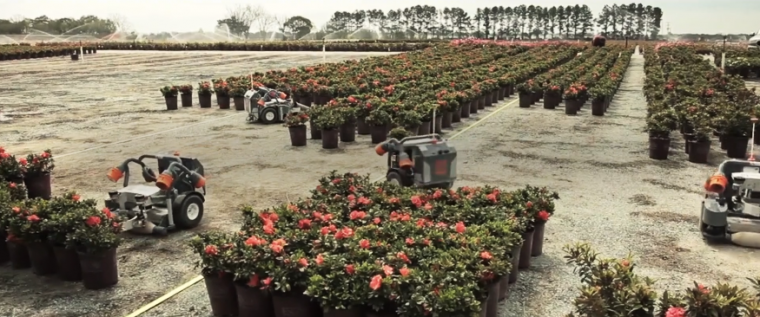As Hadlow College is celebrating its 50th anniversary with the Vision50 ‘looking into the future of farming’ campaign, it is a poignant time to showcase the benefits robotics has to offer, including the transformative impact it is having on farming.
With the world population estimated to grow from 7.3 billion to 9.7 billion by 2050, food production has never been so vital. Smaller farms are becoming more and more common, as larger commercial farming companies turn to compact areas to maximise food production. However in these bijou spaces, the operation of large machinery is a practical impossibility, causing energy and fuel wastage which negatively impact environmental health.
While heavy machinery is completely justifiable in large-scale contexts, their suitability to small-scale farms is debatable. But what is the solution to this concern? What farming methods can be best utilised in smaller spaces to meet food production demands in our current and future eco-climate? Could innovative robotic technology offer a more sustainable alternative for small-scale farming?
So what is meant by the term ‘robotics?’ It is important to highlight that robots are heterogeneous, available in various shapes and sizes suitable for arable and livestock farming. These robots can take the appearance of more conventional machine-like shapes or can look human-like, depending on the type of farming.
Firstly, attention must be paid to robotics’ benefits, namely its sustainability. Robots will help farms save labour costs and any shortages, particularly in light of Brexit. According to statistics, British farms employed up to 22,517 EU-born workers in 2015, accounting for a fifth of those working in the sector. With many EU citizens choosing to depart the UK in the wake of Brexit, robots could potentially fill a huge labour gap, offering a positive solution to a very uncertain future.
Whilst the prices of small robots might seem high (they range from £20,000-£25,000), they are a sure investment. Robots perform in all weather conditions, meaning yield is not compromised by adverse climates. Unlike humans, robots require fewer breaks and can weed and hoe for longer periods of time. Moreover, different types of crops from beetroot to onions can be grown in the same spaces. Robots can run for up to 10 hours without a battery charge; and current studies are developing ways to charge robots through wireless and photovoltaic (PV) charging systems. Longer working time = higher yield = more crops = better profits.
If robotics plans on taking off in the farming world then it would be sensible to outline certain regulations beforehand. For instance, agricultural industry standards might be implemented to assure safe, transparent practice across the board. Proper training schemes will also need to be developed so farmers understand how to operate equipment in order to minimise risk to health and finances.
Romantic, pastoral images of farmers operating at daybreak belong to a bygone era in agriculture. Whilst the transition from manual to tech farmer is complex, it will nonetheless ensure robotics is a rigorous, well-thought out farming method that could turn out to be farming’s saving grace.




